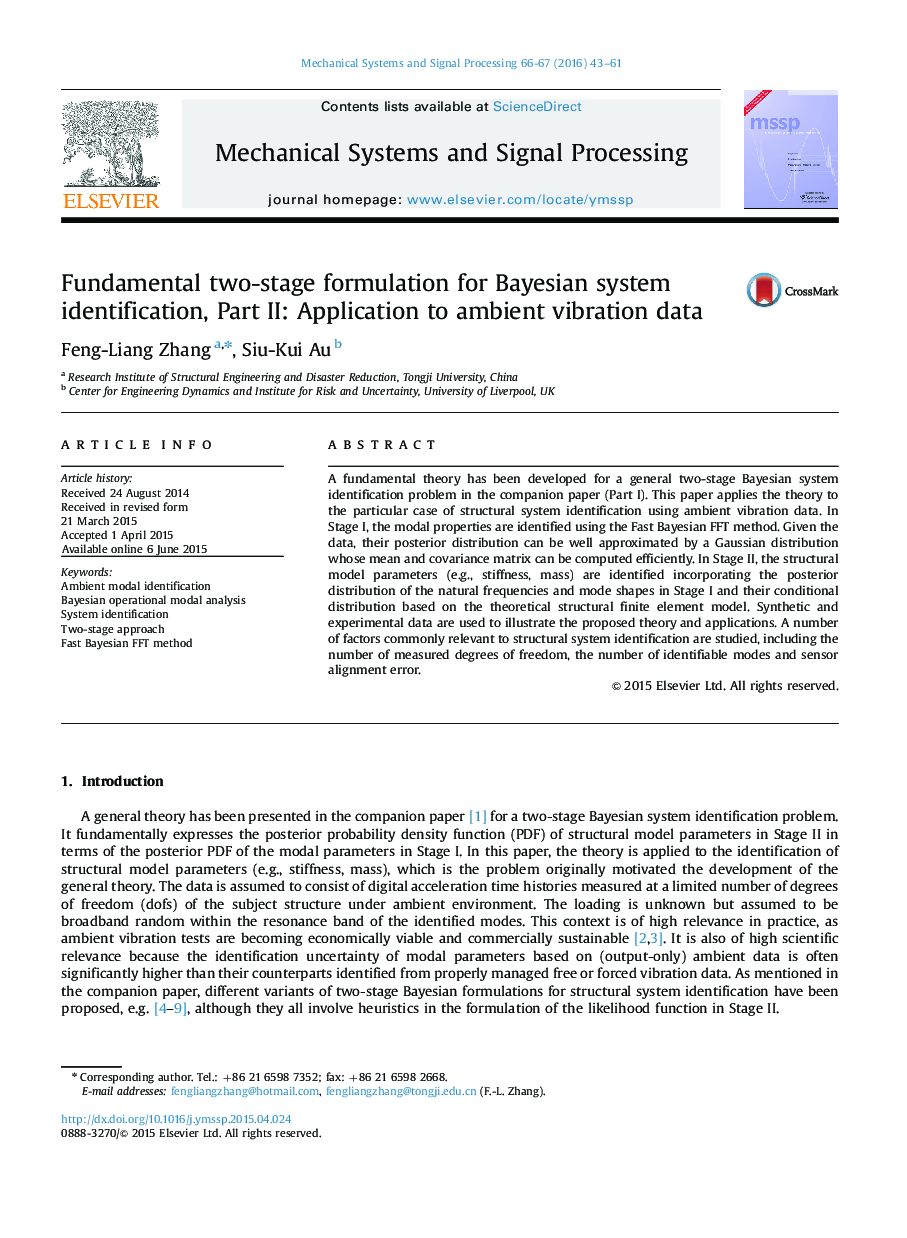| Article ID | Journal | Published Year | Pages | File Type |
|---|---|---|---|---|
| 559116 | Mechanical Systems and Signal Processing | 2016 | 19 Pages |
•General theory applied to structural identification with ambient data•Critical appraisal with existing formulations•Illustrative examples with synthetic and experimental data
A fundamental theory has been developed for a general two-stage Bayesian system identification problem in the companion paper (Part I). This paper applies the theory to the particular case of structural system identification using ambient vibration data. In Stage I, the modal properties are identified using the Fast Bayesian FFT method. Given the data, their posterior distribution can be well approximated by a Gaussian distribution whose mean and covariance matrix can be computed efficiently. In Stage II, the structural model parameters (e.g., stiffness, mass) are identified incorporating the posterior distribution of the natural frequencies and mode shapes in Stage I and their conditional distribution based on the theoretical structural finite element model. Synthetic and experimental data are used to illustrate the proposed theory and applications. A number of factors commonly relevant to structural system identification are studied, including the number of measured degrees of freedom, the number of identifiable modes and sensor alignment error.
